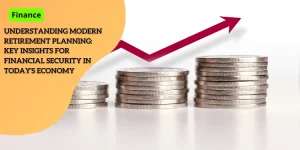Market Anxiety Peaks: Will the Federal Reserve Address Economic Warning Signs?

Anúncios
Market Turbulence and Investor Concerns
The stock market has faced severe headwinds recently, with the S&P 500 declining by over 4% 📉 so far this year.
This downturn reflects the broader concerns of business and consumer sentiment, which are deteriorating at an alarming pace ⚠️.
Anúncios
Investors are on edge, anxiously waiting for the Federal Reserve’s response to the growing economic uncertainty.

Anúncios
📉 Stock Market Decline
The significant drop in the S&P 500 indicates a lack of confidence in the market’s near-term outlook.
Lower interest rates typically benefit the stock market, but the recent decreases in some interest rates have not helped lift stock prices 📊.
Instead, concerns about the overarching economic conditions are overshadowing any potential benefits of lower borrowing costs.
🏢 Business and Consumer Sentiment
Chief executives from major companies like Delta Air Lines ✈️ and Macy’s 🛍️ have raised alarms about the weakening consumer sentiment.
These businesses are seeing firsthand that consumers are beginning to struggle, reflecting a broader souring of sentiment across the economy.
This consumer hesitancy is spilling over into business confidence, creating a feedback loop that perpetuates economic concerns.
Investor Anxiety
Investor focus is primarily on the Federal Reserve’s next move 🏦. They are keen to see how the central bank will navigate the turbulent economic landscape.
As of now, the Federal Reserve has maintained a cautious stance, avoiding explicit comments on the increasingly uncertain outlook.
However, with the S&P 500’s sharp decline, businesses’ grim reports, and growing consumer struggles, the pressure is mounting for the Fed to act decisively.
The Awaited Federal Reserve Response
With economic sentiment declining, all eyes 👀 are on the Federal Reserve’s upcoming statements. Investors are particularly interested in the Fed’s communication on interest rate policies and its projections for the economy.
These projections will be critical in shaping market expectations and could either stabilize or further unsettle the markets depending on how they align with current concerns.
Current Economic Indicators
Current economic indicators are painting a bleaker picture of the market, hinting at further struggles ahead.
The Federal Reserve Bank of Atlanta recently forecasted a negative growth rate for the first quarter, specifically coming in at minus 1.8% 📉.
This prediction is a significant indicator of economic turbulence and highlights that these aren’t just passing clouds – the storm might indeed be coming 🌩️.
Retail Sales and Consumer Spending
Retail sales have been falling below expectations, with recent data showing downward revisions.
Consumers’ willingness or ability to spend is a critical component of economic health 💰.
Lower retail sales figures suggest that either consumers are tightening their belts or their financial situations have deteriorated, which is never a great sign for overall economic vitality.
Currency Weakness
Adding to the concerning picture is the U.S. dollar’s recent performance.
The dollar has weakened significantly, down 4% in March alone 📉.
This drop signifies the currency’s worst month since November 2022.
A depreciating dollar can have a mixed bag of consequences – it could make U.S. exports more competitive abroad 🌍, but it also points to underlying economic vulnerabilities and can lead to rising import costs and inflationary pressures domestically.
Broad Economic Impact
These economic indicators collectively underline a period fraught with uncertainty and challenges.
Investors are keenly aware of these signs, with many already turning to safer bets like gold 🏆.
The overall sentiment is shifting from mild concern to palpable anxiety.
With the retail sector showing cracks and the dollar under pressure, there is little room for optimistic speculation.
📉 Interest Rate Dynamics
🔄 Shift in Rate Cut Expectations
As the economic landscape continues to shift, market expectations for Federal Reserve rate cuts have been pushed back.
At the beginning of March, investors were eyeing June for the next cut. However, due to recent developments, this expectation has moved to July 📆.
This delay is causing a lot of anxiety among investors who are seeking stability in the face of growing economic uncertainty.
📉 Decline in Longer-Dated Market Interest Rates
Interestingly, certain interest rates in the market have begun to decrease independently of Federal Reserve action.
Longer-dated market interest rates, which often affect things like mortgages and auto loans 🚗🏡, have fallen as worry over economic growth mounts.
This decline in rates is performing some of the same functions that a Federal Reserve rate cut would, offering a bit of a reprieve as inflation remains a persistent issue 📈.
📉 Lower Rates and Stock Market Performance
| Aspect | Impact |
|---|---|
| 📉 Interest Rates | Traditionally, lower rates boost stock markets by making borrowing cheaper and encouraging investment 💼. |
| 📊 S&P 500 Performance | Despite rate declines, the S&P 500 is down over 4% this year, indicating a disconnect between rates and stock performance. |
| ⚠️ Economic Outlook | Falling rates are driven by concerns about economic growth, signaling a bleak forecast for corporate profits and market performance 📉. |
📢 Corporate Struggles
Warnings from corporate America further exacerbate investor concerns.
Major businesses such as Delta Air Lines and Macy’s have reported that consumers are facing difficulties, which could translate into lower revenues and profits 📉.
This consumer struggle is a worrying sign, highlighting that lower rates alone may not be enough to counter the broader economic issues at hand.
🤔 The Broader Implications
The Federal Reserve is at a pivotal moment 🏦. Lowering rates is typically a lever it pulls to stimulate the economy, but the current economic indicators suggest that mere rate cuts might not suffice.
The market is anxious, watching closely for Fed actions and communications that could offer more clarity and possibly some relief 🙏.
As we shift our focus, the anticipation surrounding the Federal Reserve’s next steps becomes even more pronounced.
Investors are particularly keen on the Fed’s upcoming economic projections and how these might influence market stability 📊.
📉 Corporate America’s Warning Signs
The clouds have been gathering over corporate America for a while now 🌩️.
Notable companies, such as Delta Air Lines and Macy’s, have been vocal about the struggles consumers are facing.
Delta, for instance, has seen a noticeable decline in demand, which it attributes to weaker consumer confidence 📉.
Macy’s, on the other hand, has reported a drop in store traffic, hinting that shoppers are tightening their belts amid economic uncertainty 🛍️.
These are not isolated cases but part of a broader trend impacting the market.
🌎 Impact on Foreign Investment
The unease isn’t just confined to domestic shores. Foreign investors are also reevaluating their stakes in U.S. markets 📉.
The shift isn’t entirely surprising given the recent economic data. The Federal Reserve Bank of Atlanta’s forecast of negative growth for the first quarter raises red flags 🚨 for international fund managers.
Coupled with a weakening U.S. dollar, which declined 4% in March alone, the environment is becoming less attractive for offshore investors 🌍.
🏦 Federal Reserve’s Critical Decision Point
As the Federal Reserve gears up for its upcoming announcement, the stakes could not be higher 📊.
This will be the first time since December that the Fed will provide new economic projections, and given the current economic climate, all eyes 👀 are on how they will respond.
Investors will be watching closely for any signs of the Fed’s concern over the economy, as well as their predictions for future rate adjustments ⚖️.







